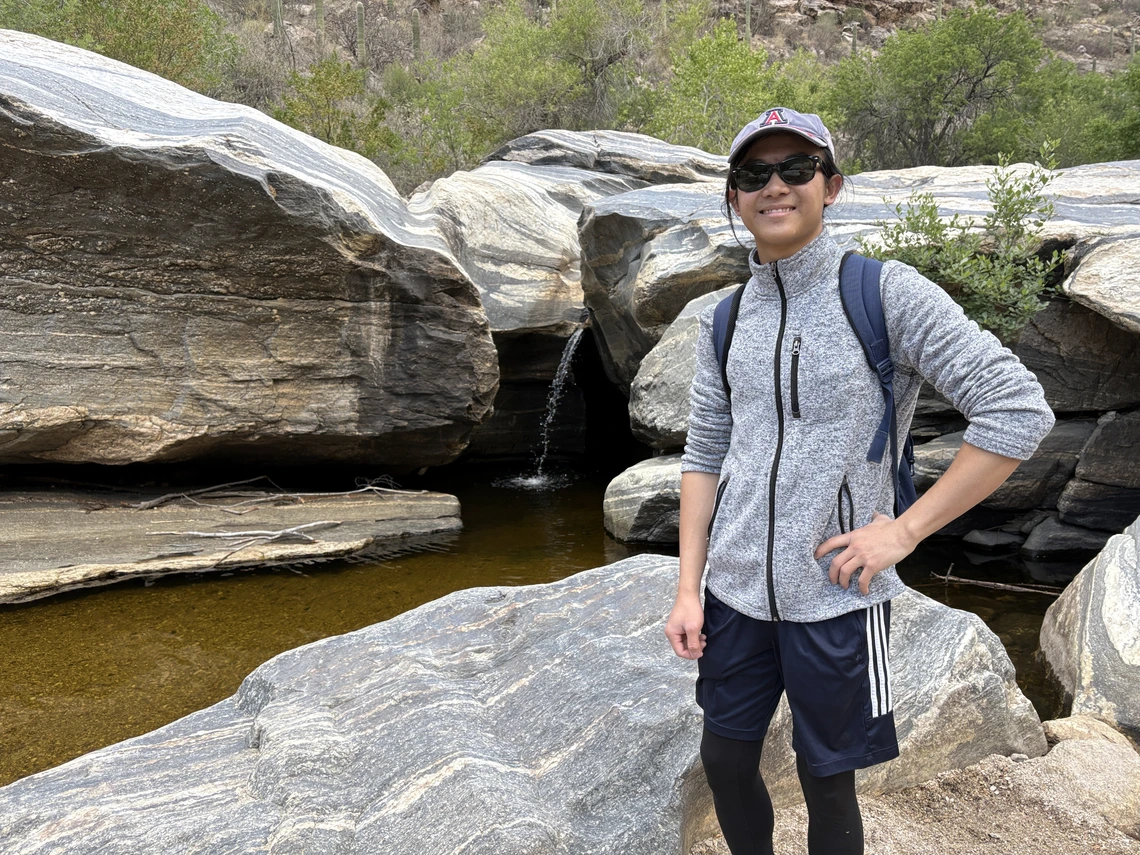Minh Ngo: Harmonizing Innovation and Sustainability

Minh Ngo is entering his junior year at the University of Arizona studying computer science, and this summer, he began working as the research technology and development support specialist with the Arizona Institute for Resilience.
In this Q&A, Ngo reflects on how he hopes to utilize technological innovation to advance sustainability and help create communities that work in harmony with the natural world.
Why did you choose to major in computer science?
What draws me to the field of computer science is the intricate logic behind the technology we rely on every day, from basic calculators to advanced artificial intelligence. This field gives me the opportunity to use my passion for innovation on modern technology.
How have you been involved in environmental or sustainability efforts as a student at the University of Arizona?
I recently relocated closer to the University of Arizona to reduce my carbon footprint. This move also enabled me to take on a student worker role with the Arizona Institute for Resilience (AIR), where I contribute to projects that promote environmental awareness particularly around our region’s unique weather phenomenon, the monsoon. Through this work, I’ve been able to combine my programming skills with my passion for community impact, exploring innovative ways to support environmental education and resilience.
Are there any specific areas of sustainability or the environment that you’re especially passionate about?
I'm especially passionate about urban and transportation development. I believe we have the opportunity to design neighborhoods and cities that not only serve people efficiently, but also integrate the natural environment around us. It's about creating spaces that are both functional and harmonious with the ecosystems we inhabit.
How do you hope to carry your environmental or sustainability values into your future career?
I hope that my intrinsic appreciation for nature continues to drive my motivation to take on meaningful projects in the field of computer science — projects that not only advance technology but also contribute to a more sustainable future.
It seems like in some ways, technology and sustainability are at odds (like ai/data processing and water usage, for example). How do you see technology and sustainability aligning, or more generally what are your thoughts on this tension that exists in the world of sustainability and technological innovation?
I see technology aligning with sustainability when innovation goes beyond just functionality, features, and efficiency. Just like how nature has its own cycles, the lifecycle of technology is such an important factor of innovation that teaches us to ethically source materials and reuse them. Technology plays a large role in making quick advancements to many infrastructures, but nature's resource cycles should be a reminder to us that innovation should be guided by these principles of resource management.
How do you think students can help encourage more sustainable choices and behaviors at places like the U of A?
Students have a wide range of opportunities to promote sustainability on campus. Beyond everyday actions like recycling, they can take initiative by engaging in sustainability-focused research or joining student clubs that foster environmental awareness both within and outside the University of Arizona. These efforts not only encourage greener habits but also help build a strong, connected community working toward a more sustainable future.
Why do you think it’s important for students to care about the environment, even if it’s not what they’re studying?
I believe caring for the environment is a shared responsibility. Just as we show respect and consideration for one another, we can extend that same respect to the natural world. Even if our academic paths don’t directly focus on environmental issues, the way we pursue our goals — through sustainable choices and mindful practices — can contribute to environmental responsibility.
Where have you found a sense of community on campus?
My sense of community is with the Pride of Arizona Marching Band, where I’m in the color guard. Hundreds of students undergo rigorous practice and training together to display amazing performances at football games. They are the prime example of a collective effort to make an impact on our audiences. Their achievements have proven to me that we can make large positive contributions when we work together.
How do you see your own interests or skills — whatever they may be — playing a role in environmental or sustainability efforts?
Hiking and rock climbing have deepened my connection to the beauty of Tucson’s desert landscape. I find inspiration just by listening to the natural world around me. These quiet moments give me visions of urban development that doesn’t just coexist with nature—but actively integrates it.
